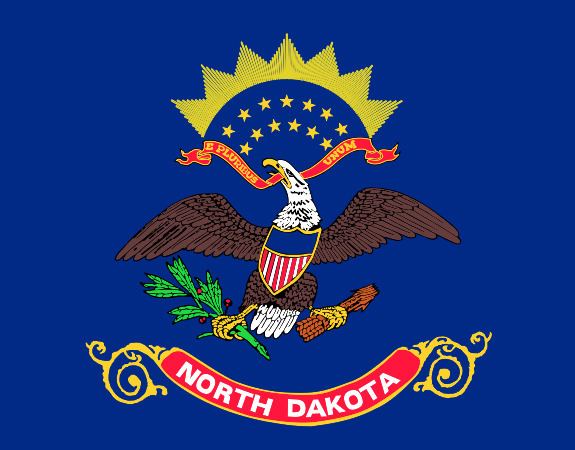Capital Bismarck | Area 183,272 km² | |
 | ||
Cities Fargo, Bismarck, Grand Forks, Minot, Williston, Mandan Rivers | ||
The Geography of North Dakota consists of three major geographic regions: in the east is the Red River Valley, west of this, the Missouri Plateau. The southwestern part of North Dakota is covered by the Great Plains, accentuated by the Badlands. There is also much in the way of geology and hydrology.
Contents
- Map of North Dakota USA
- The Red River Valley
- The Missouri Plateau and Drift Prairie
- The Great Plains
- The Badlands
- Notable points
- References
Map of North Dakota, USA
North Dakota is about 340 miles (545 km) east to west and 211 miles (340 km) north to south, with a total area of 70,704 square miles (183,123 km²), making it the 19th largest of the 50 U.S. states. About 2.4% of North Dakota's area is covered by water.
The Red River Valley
The Red River Valley takes up the eastern portion of the state, with the Red River of the North forming the border with Minnesota.
The Valley is the remnant lake bed of the ancient Lake Agassiz. It is very flat, and is quite fertile. This area of North Dakota is mostly farm country, with wheat, sugarbeets, and maize as staple crops, and along with other crops and livestock, cover the area. The valley contains the lowest point in North Dakota which is the Red River at Pembina, at 750 feet (230 m) above sea level.
The Missouri Plateau and Drift Prairie
To the west of the Red River Valley is the Drift Prairie and the Missouri Plateau (or Coteau du Missouri). The Drift Prairie is bordered on the north by the Turtle Mountains and separated from the Red River Valley by the Pembina Hills. This area rises from 200 to 2,000 feet over the Red River Valley. The Drift Prairie is covered in lakes, stream valleys, and rolling hills. This region suffers moderate to severe flooding from the Red River almost annually, caused by the heavy snowfall in this region every winter.
The Great Plains
About half of North Dakota is covered by the Great Plains. The Great Plains, in the southwestern section of the state, are hilly and rich in mineral deposits. This area rises about 300 to 400 feet above the Drift Prairie east of the Missouri River. Along the Missouri River, the land is lower. This area is called the Missouri Break. To the south and west of the river is an area of rugged valleys and buttes called the Slope.
The Badlands
The Badlands lie in southwestern North Dakota. The Badlands are exposed surfaces of stone and clay that erosion has shaped into striking formations; many shades of browns, reds, grays, and yellows appear in buttes, pyramids, domes, and cones. They stretch for about 190 miles (305 km) and are from 6 to 20 miles (10 to 30 km) wide. In some areas of the Badlands the rocks contain lignite coal that has been burning for many years. The clay above these coal beds has turned bright pink and red. White Butte, the highest point in North Dakota, is located in the Badlands, and stands 3506 feet (1069 m) above sea level.
Notable points
Extreme points
Physiographic points
Hydrographic points
